HELLO! MR TREE, DIR. HAN JIE (2011)
Space of Tree, Liaoyuan City, Jilin Province, Northeast China
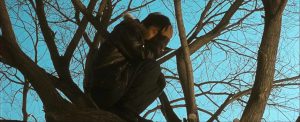
“Hello! Mr Tree” was directed by director Han Jie and supervised by Jia Zhangke and was released in mainland China on November 4, 2011. As a rare Chinese magical realism work, “Hello! “Mr Tree” is based on a man in rural Northeast China who wanders between the absurd and reality. The main character in this film is named Shu. In Chinese, Shu means “tree”. The tree that started as space becomes the core and remarkable symbol of the whole film: Shu’s spiritual world symbolises reality and fantasy. A simple, independent, and exposed space like a tree shows the virtual and real emotions of the film three-dimensionally.
The tree that appears in the film has a double meaning, namely: reality and fantasy (dream). There are two real trees in the movie: one is the tree in front of Shu’s house that hangs his brother at the same time, and the other is Shu squatting on it. The tree in front of the house was tall, with slender branches reaching to the sky. The other tree was thick and short, and its lush branches swept across as if covering the sky. Shu, who witnessed his father hang his younger brother, has been living in the shadows for many years and has become a sensitive, vulnerable and inferior person, and the tree in his memory is also cruelly stationed in the depths of Shu’s spirit. So Shu saw the tree in front of his house and imagined the scene of his brother’s death. As the plot of the movie progressed, the original “tree in reality” was slowly distorted by Shu’s spirit and turned into a “fantasy”. From then on, Shu sat on the tree and began to dream. Through the “spiritual victory method,” he imagined a dream that ran counter to reality.
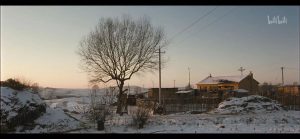
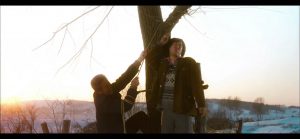
Trees are used in the film because “it is a product of imagination, and of course, inspired by literature. In human experience, trees can easily become symbolic references…Trees are Shu’s spiritual world”[1]. So the most magical part of the last scene of the film is: the whole tone becomes a suffocating red, and the two trees in the real world gradually merged into one tree in Shu’s dream: very strange and terrifying. For him, this scene is the most real “reality” in the dream: the red sky in the dream is fake, and the crowd running is fake. But Shu touched the tree, and it was true that there was a rope hanging on the branch to hang his brother (father killed his brother). He has carried this fear into his dreams since the opening of the film, sitting in a tree and dreaming. Until the end of the movie… Shu’s fear of trees also comes from his spirit. The image of the tree is Shu’s spiritual world. And his spiritual world gradually revealed a sense of panic of being socially alienated and deprived.
— Pan Siqi, UID: 3035949102
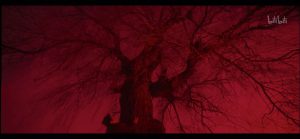
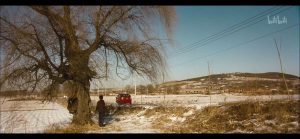
Note:
1 Director Han Jie explains why the film is represented by trees, interviewed by China’s Tencent Entertainment
I appreciate how your film analysis explored reality and imagination. It is interesting that you selected ‘trees’ as the space. You can be more specific in your description and analysis of what seems to be a generic space. For example, you mentioned that the story takes place in rural northeast China, so you can also further explore the climate and landscape in which the trees are in. Besides your point about colour, you may also like to explore the different framings used in the film and their effect. Also, why do you think there are two different trees as you have described? Finally, you are also reminded to cite any references used properly.